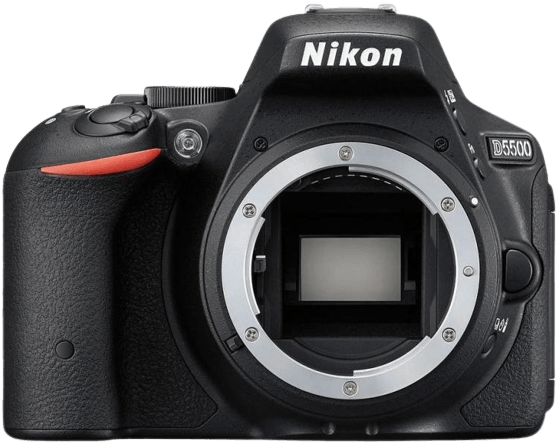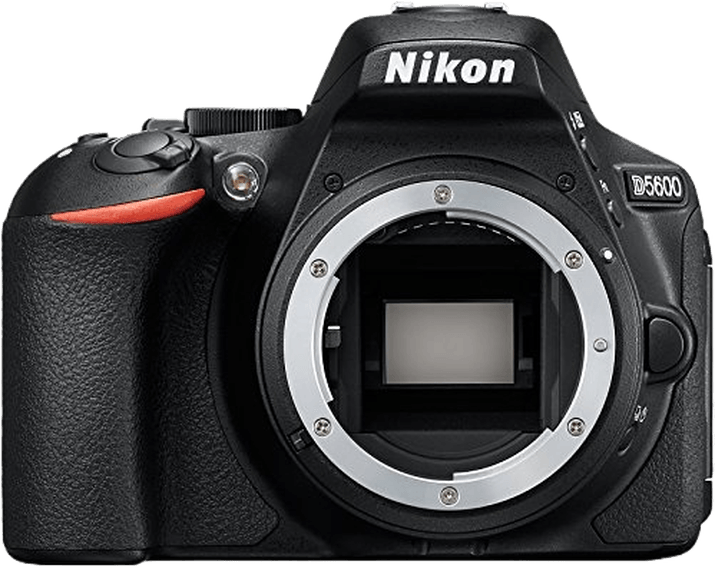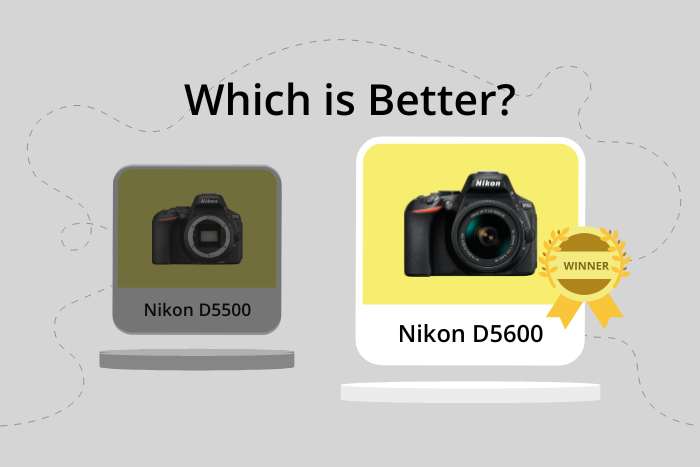Nikon D5500 vs D5600 Comparison
Nikon D5500

Nikon D5600

The Nikon D5600 emerges as the winner with a score of 66/100, compared to the Nikon D5500‘s score of 61/100. Both cameras are DSLR types, announced in 2015 and 2016 respectively, and share the same dimensions of 124 x 97 x 70mm. The D5600 has an edge over the D5500 in terms of price, as it was launched at $700, while the D5500 was introduced at $900.
The D5500 is lighter, weighing 420g, compared to the D5600’s 465g. This makes the D5500 more convenient for those who prefer a lighter camera. However, the D5600’s higher score reflects its overall better performance and features, making it a more attractive option for photographers. The lower launch price of the D5600 also adds to its appeal.
Nikon D5500 vs D5600 Overview and Optics
The Nikon D5500 and Nikon D5600 both receive a score of 65/100 for their optics, indicating that there is no clear winner between the two cameras in this category. Both cameras share several common specifications, including a 24.2-megapixel CMOS sensor, a shooting speed of 5 frames per second, an Expeed 4 processor, a DXOMARK sensor score of 84, an APS-C sensor size, a Nikon F DX lens mount, and no image stabilization.
Despite their identical scores, the Nikon D5600 has certain advantages over the D5500. The D5600 features SnapBridge technology, which allows for seamless image sharing and remote control through a smartphone or tablet. This feature is particularly useful for photographers who want to quickly share their images or control their camera remotely without the need for additional accessories.
On the other hand, the Nikon D5500 has a slightly lighter body, which can be beneficial for photographers who prioritize portability and ease of use. Additionally, the D5500 is often available at a lower price point than the D5600, making it a more attractive option for budget-conscious photographers.
In terms of optics, both the Nikon D5500 and D5600 offer similar capabilities and performance. The D5600 has the advantage of SnapBridge connectivity, while the D5500 is lighter and often more affordable. Ultimately, the choice between these two cameras will depend on the individual photographer’s priorities and preferences.
Nikon D5500 vs D5600 Video Performance
The Nikon D5500 and Nikon D5600 both have a video score of 70/100, making them equal in terms of video capabilities. They share several common features, including Full HD max video resolution, 1920 x 1080 max video dimensions, and a max video frame rate of 60fps. Additionally, both cameras have built-in time-lapse functionality.
Despite having the same video score, the Nikon D5600 offers some advantages over the Nikon D5500. The D5600 features SnapBridge, which allows for seamless sharing of photos and videos to a smartphone or tablet. This feature makes it easier for users to share their work on social media or with friends and family. The D5600 also has a slightly longer battery life, allowing for more shooting time before needing to recharge.
On the other hand, the Nikon D5500 has a few benefits over the D5600. The D5500 is lighter and more compact than the D5600, making it a more portable option for those who value a lightweight camera for travel or extended shooting sessions. Additionally, the D5500 is often available at a lower price point, making it a more budget-friendly option for those looking to save money without sacrificing video quality.
Taking these factors into account, both the Nikon D5500 and Nikon D5600 are strong choices for video shooting. The D5600 might be preferred by those who value seamless sharing capabilities and a longer battery life, while the D5500 could be favored by those who prioritize a lighter, more portable camera and a lower price point. Ultimately, the choice between these two cameras will depend on the individual user’s preferences and needs.
Nikon D5500 vs D5600 Features and Benefits
The Nikon D5600 wins the features comparison with a score of 72/100, while the Nikon D5500 scores 59/100. Both cameras share several specifications, including a 3.2-inch screen size, 1037000-dot screen resolution, touchscreen, flip screen, and Wi-Fi capabilities. They also lack GPS functionality. However, the D5600 has additional features that give it an edge over the D5500.
The winning camera, Nikon D5600, outperforms the D5500 mainly due to its Bluetooth connectivity. This feature allows users to quickly and easily transfer images to their smartphones or other devices, enhancing the overall user experience. With Bluetooth, the D5600 is more convenient for sharing photos on social media or backing up images to cloud storage.
On the other hand, the Nikon D5500 has no significant advantages over the D5600 in terms of features. Both cameras are very similar, and the D5500 does not offer any unique features to make it a better choice. However, it is worth noting that the D5500 may be available at a lower price point, making it a more budget-friendly option for some users.
In comparing the Nikon D5500 and D5600, it is clear that the D5600 is the superior camera in terms of features. Its Bluetooth connectivity sets it apart from the D5500, making it a more convenient and user-friendly option. While the D5500 does not offer any significant advantages, it may be a more affordable choice for those on a tight budget. In the end, the Nikon D5600’s additional features make it the better camera for most users.
Nikon D5500 vs D5600 Storage and Battery
The Nikon D5600 outperforms the Nikon D5500 in storage and battery with a score of 43/100 compared to 35/100. Both cameras have one memory card slot and accept SD, SDHC, and SDXC cards. However, the D5600 is UHS-I compatible, providing faster data transfer speeds for improved performance.
The D5600 also boasts a longer battery life, offering 970 shots compared to the D5500’s 820 shots. This is due to the D5600’s use of the EN-EL14a battery, while the D5500 uses the EN-EL14 battery. Neither camera supports USB charging.
Although the D5500 falls short in this comparison, it still provides a decent battery life and storage capacity for casual photographers. However, the D5600’s advantages in battery life and UHS-I compatibility make it the better choice for those who prioritize longer shooting sessions and faster data transfer speeds.
Nikon D5500 vs D5600 Alternatives
Still not sure which camera is best for you? Check out these popular camera comparisons for inspiration:

